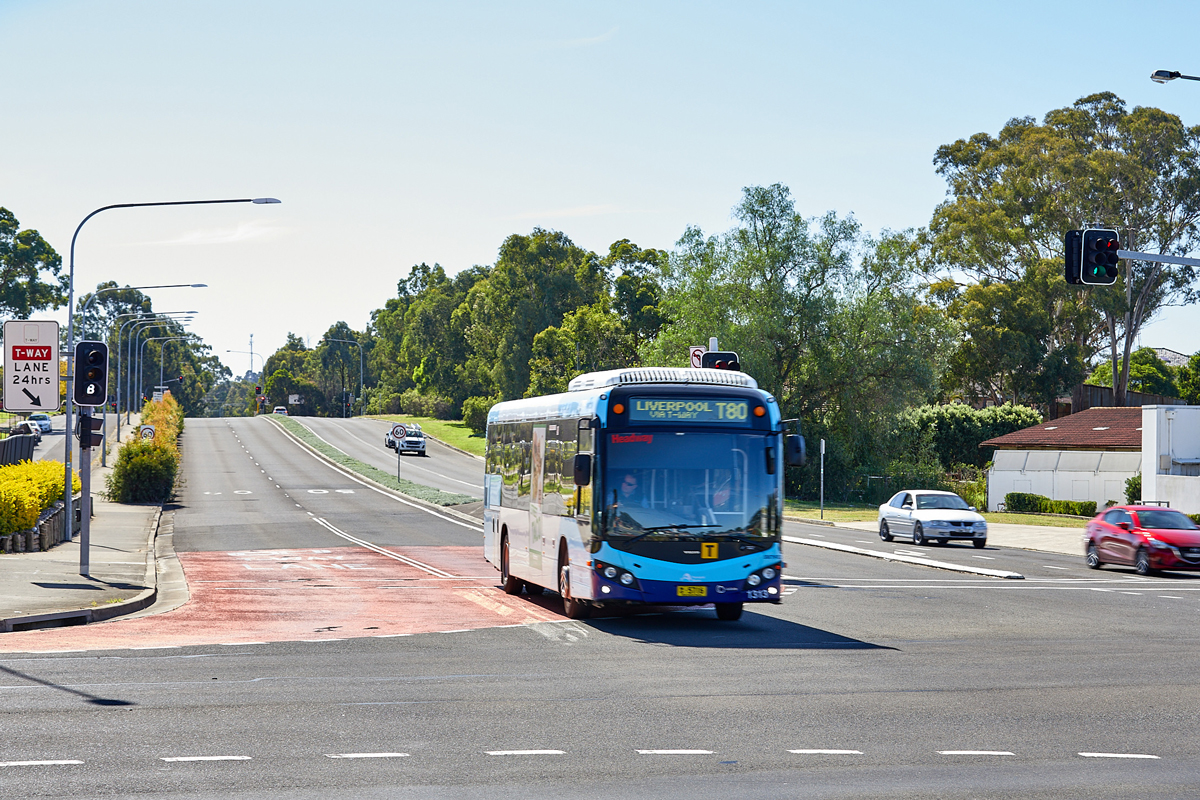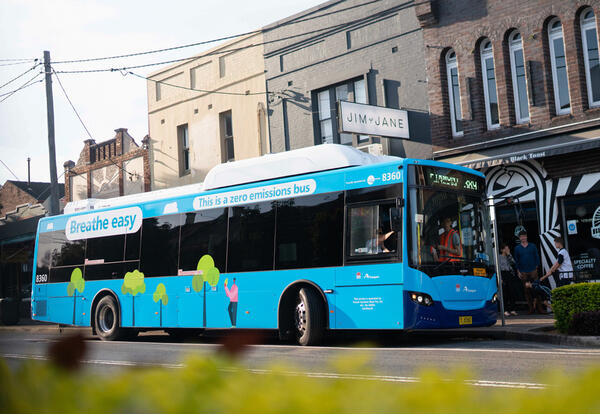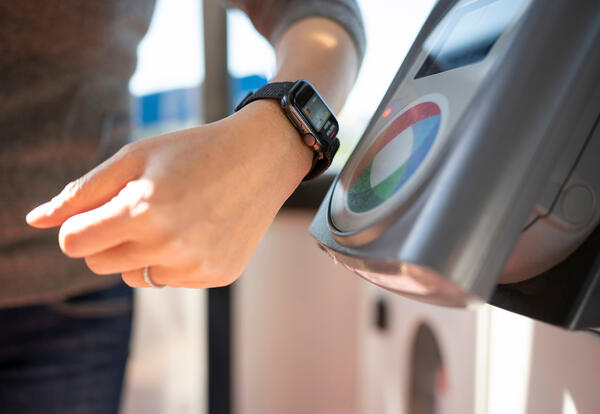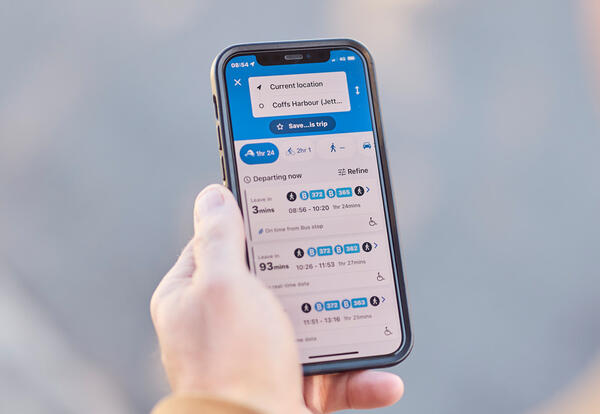Transport technology case study: Priority for public buses at traffic lights

T80 bus at traffic light. Image: Transport for NSW
Introduction
Transport for NSW has developed and deployed technology that allows for real-time adjustments to traffic light signals. This technology allows for much needed bus priority measures to be implement, improving both reliability and trip times on a major Western Sydney route.
Challenge
Reliability is critical to passenger confidence in our bus network. However, the 2023 NSW Bus Industry Taskforce interim report found that increased traffic and passenger demand have impacted on-time running which has deteriorated in recent years. Providing priority for buses was identified as a key measure to restore reliability and passenger confidence.
15% reduction in the overall bus travel times on the T80 Liverpool Parramatta Transitway in FY22.
Solution
Transport has successfully implemented a new bus priority measure using a combination of three existing technologies.
The first technology is SCATS, or the Sydney Coordinated Adaptive Traffic System. Using vehicle sensors at intersections, SCATS manages traffic light signal phases and allows them to adapt to changing traffic conditions, ensuring safer journeys and prioritising emergency vehicles and public transport.
The second technology is an extension of SCATS referred to as the SCATS Priority Engine or SPE. SPE is a sophisticated component of SCATS that enhances the capabilities of SCATS by providing prioritised traffic signal control for specific vehicles - typically high-capacity modes of transport like buses, trams, and emergency vehicles within SCATS controlled traffic networks. SPE receives priority requests from external vehicle tracking systems and communicates these to the SCATS controller to ensure the enabled vehicle receives appropriate priority when moving through the road network.
The final technology solution is a vehicle tracking system known as PTIPS, or the Public Transport Information and Priority System, which manages real time operation of buses across NSW. When combined with SCATS and SPE, PTIPS tracks the buses and when approaching intersections requests a priority green signal, providing passengers with faster, more reliable travel times.
This innovation has been implemented on the T80 Liverpool Parramatta Transitway, a rapid route which covers 31km of roadway through 68 intersections and carries over two million passengers a year. PTIPS receives location data from T80 buses at the beginning of their trip and derives the predicted arrival time of the bus at each intersection. As the bus travels along the route, the system will issue a priority request to SPE asking for a green light at the upcoming intersections within the predicted arrival time. SPE will interact with SCATS to ensure the request is safe to issue and then grant the green time.
This request is cancelled once the bus has passed through the intersection, returning unused time to other vehicles. PTIPS also provides real-time data for trip planning by passengers via travel apps.
Outcomes
This rollout has delivered enhanced outcomes for passengers along the entire T80 corridor. In FY22, overall travel times have reduced by 15% and buses now average 97% on-time running. The key driver of this improvement was reduced delays at intersections, which decreased from an average of 60 seconds to 7.6 seconds per intersection. The SCATS/SPE/PTIPS combination was effective in granting buses priority 98% of the time, in comparison to 71% under previous processes.
The technology is being expanded to other rapid bus routes to help provide fast and reliable services. However, results will vary from route to route as the level of improvement can also be impacted by other factors, such as the length of the bus corridor, the number of bus stops and their location, and existing traffic conditions.
“The bus actually tells the lights up ahead that it’s coming, and it automatically changes the light, so they don’t have to sit and wait.” John Lee – Chair, NSW Bus Industry Taskforce.
Related information
Transport technology case studies

Zero Emission Buses
Our fleet of 8,000 buses will be transitioned to 100% zero emissions technology by 2047.

Next generation of Opal
The Opal Next Gen upgrade will leverage new technologies to enhance passengers’ ability to plan, pay and get information about their journey.

Transport Connected Bus Program
Real time trip information for more rural and regional bus passengers.
